Hidden in the peaceful village roads of Tuy An district, Phu Yen province, Hoa Da rice paper village appears like a vivid picture, where time seems to slow down to preserve traditional values. For those who have set foot here, Hoa Da is not only a place to produce delicious rice paper, but also a place to preserve the soul of a craft village that has gone through many ups and downs with time.
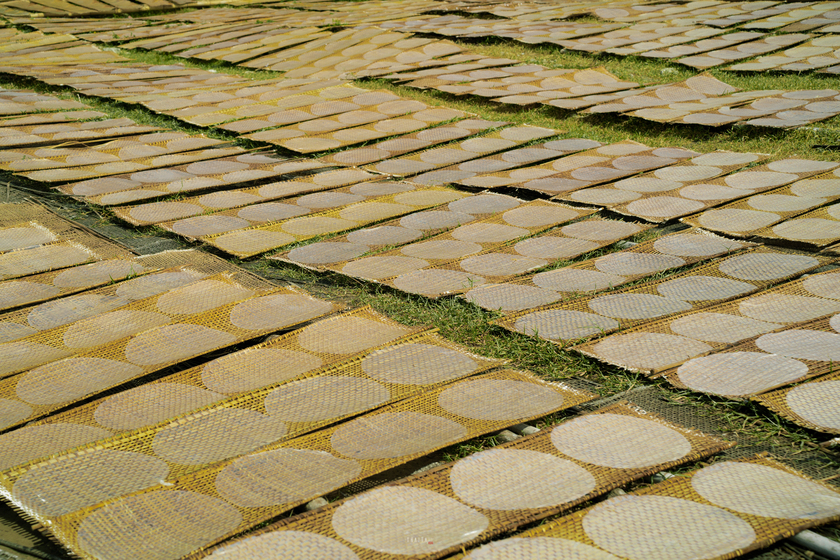
Hoa Da rice paper is dried evenly on bamboo trays, ready to bring the unique flavor from Phu Yen land.
The first feeling when arriving here is the intimacy of the rustic, simple beauty of the craft village. Everything is very familiar, from the bamboo trays used to dry cakes to the stone mortars used to grind rice.
Traditional craft villages through the eyes of young people
Dang Thai Tai, a young man born and raised in Tuy An, decided to travel to his hometown to explore and capture images of this craft village. As a professional photographer of tourism, Tai came to Hoa Da with initial images of a traditional craft village. But when he saw it with his own eyes, he couldn't help but be surprised: "Before coming to Hoa Da, I had an idea of what a rice paper oven would be like. But when I saw it with my own eyes, I was really overwhelmed. The space for making cakes is so beautiful, more beautiful than I had imagined."

Impressive rice paper trays when viewed from above
Hoa Da with its simple but vibrant rice paper ovens, has given Tai an unforgettable experience. The process of making rice paper here is not complicated, but each step requires meticulousness and dexterity. From selecting rice, grinding flour, spreading rice paper to drying rice paper, each step is done manually. Rice flour is finely ground, spread thinly on a round copper mold, then dried in the sun. The main ingredient is rice - the fragrant sticky rice of Phu Yen land, which has created rice paper with a strong traditional flavor. Hoa Da rice paper is famous for its characteristic stickiness and aroma, without any other flavor mixed in.
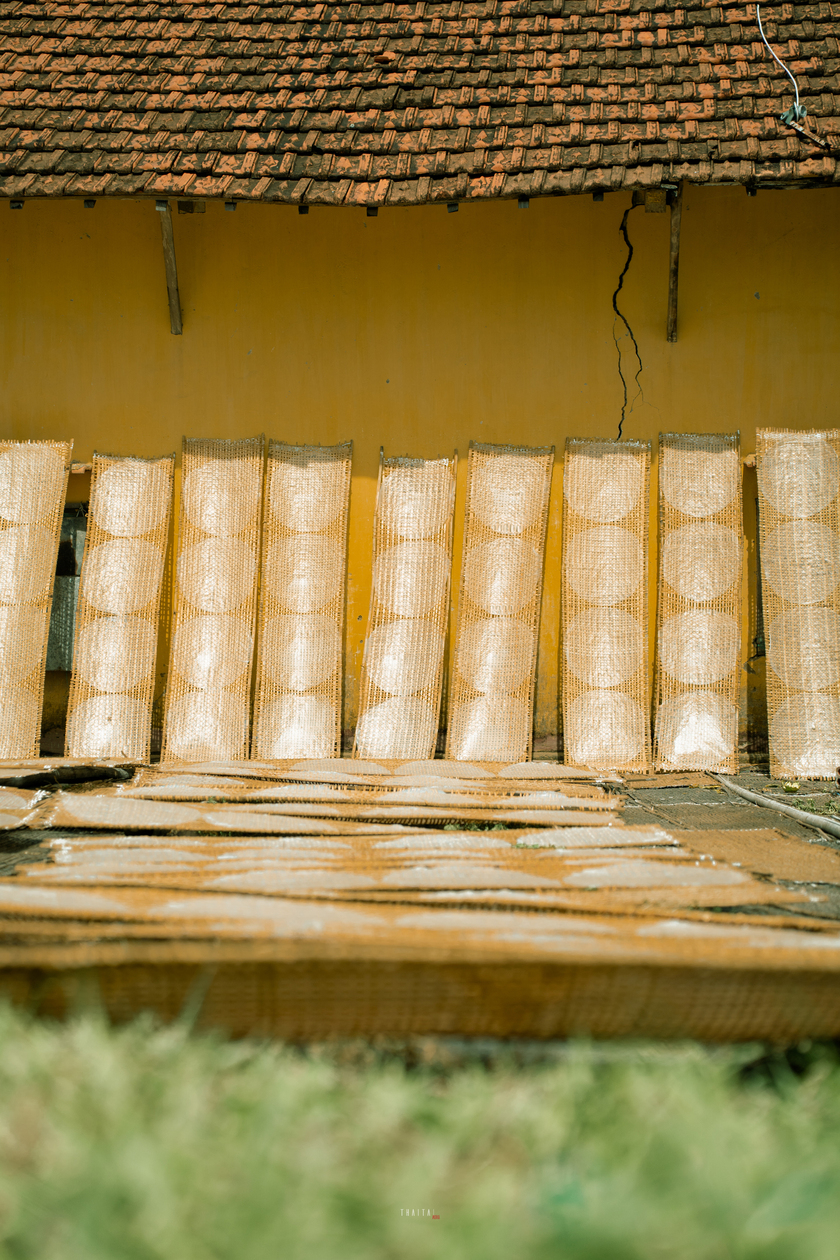
The image evokes a traditional profession imbued with the flavor of the homeland.
The secret behind delicious rice paper
Perhaps what makes Hoa Da rice paper different is not only the taste, but also the way the people here preserve the traditional processing method, not letting any modernization fade the original value of the product. For Tai, the image of the bakers in the harsh summer sun, sweat running down their foreheads, left a deep impression on him. "I see the hardships in making the cakes, the people of Hoa Da are truly admirable with their diligence and enthusiasm," he shared.
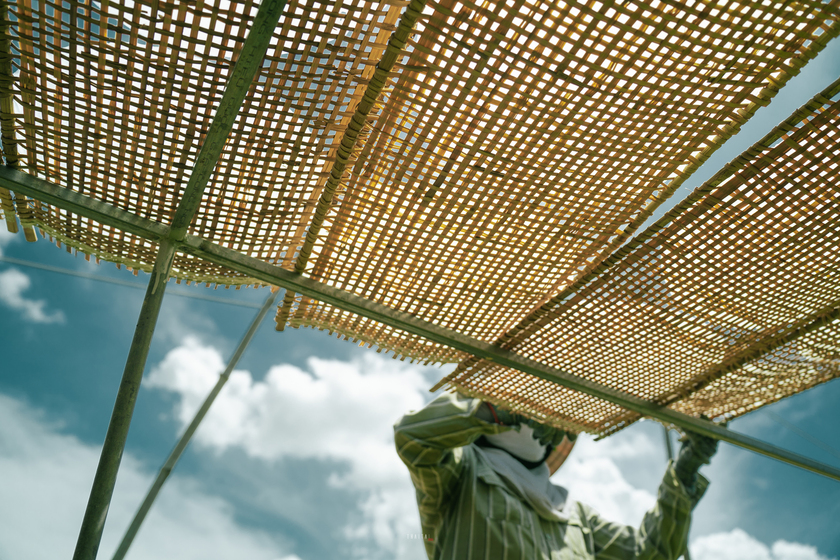

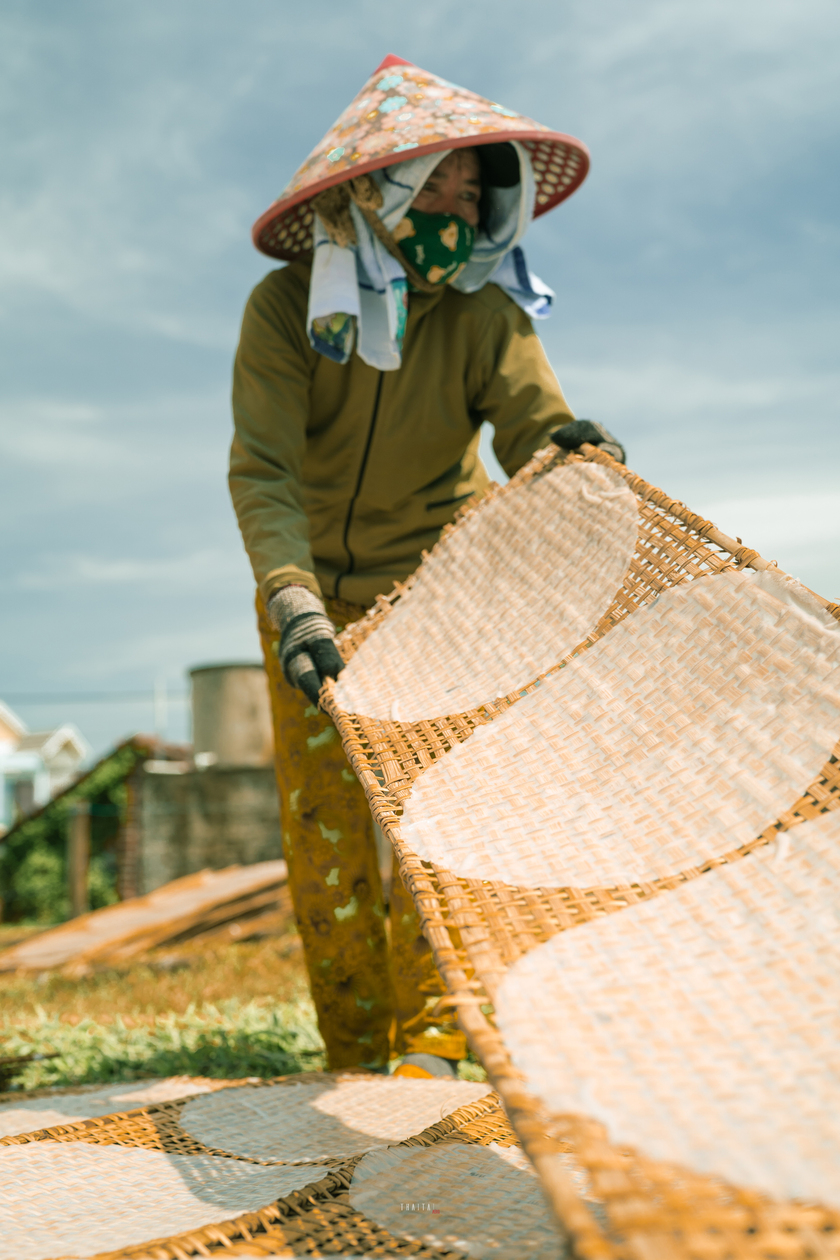
Hoa Da village workers take care of each step under the harsh sunlight.
However, what Tai is concerned about is not only the hardship of the workers, but also the reality that many tourists coming to Phu Yen only focus on famous destinations, forgetting hidden cultural values such as Hoa Da rice paper village. He confided: "Very few people know or learn about craft villages like Hoa Da, while this is the place that preserves the cultural quintessence of Phu Yen." Tai believes that if tourists take the time to visit Hoa Da, they will recognize a different Phu Yen, a Phu Yen that not only has blue sea and white sand but also has profound traditional cultural values.
Walking among the bamboo trays drying cakes in the summer noon, admiring the beauty of the craft village is also a way for us to listen to the stories of the bakers. The story of a traditional profession that has existed for many generations, of the people who still diligently preserve the flavor of their homeland every day. When standing in the middle of that culturally rich space, listening to the sound of flour being ground evenly in the old stone mortars, you will feel the breath of time, of the intersection between the past and the present.
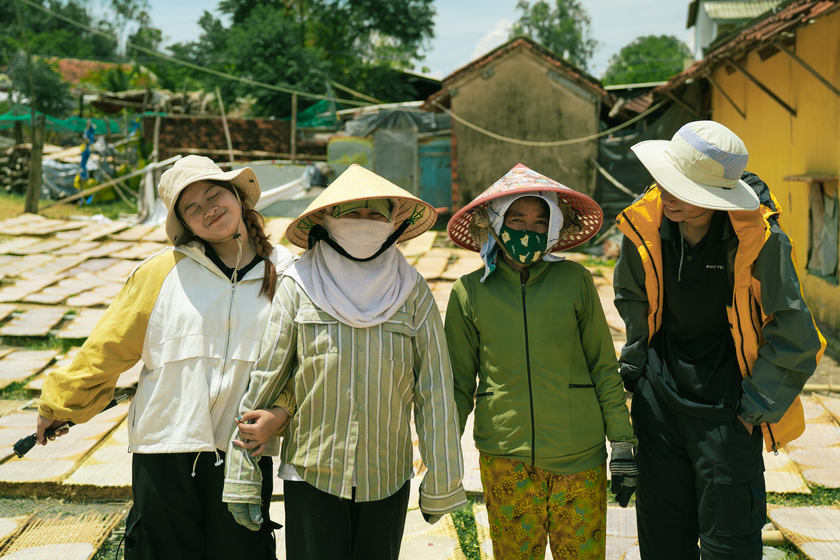
Visit the craft village to see, understand and appreciate the cultural values that are still diligently kept alive every day.
Tai hopes that in the future, Hoa Da rice paper village will not be lost to the wave of modernization. He hopes that the people here will continue to maintain traditional methods, not letting machines and technology destroy the unique flavor of the rice paper. “And it would be interesting if tourists had the opportunity to understand more about how the rice paper they eat is made,” Tai said.




































